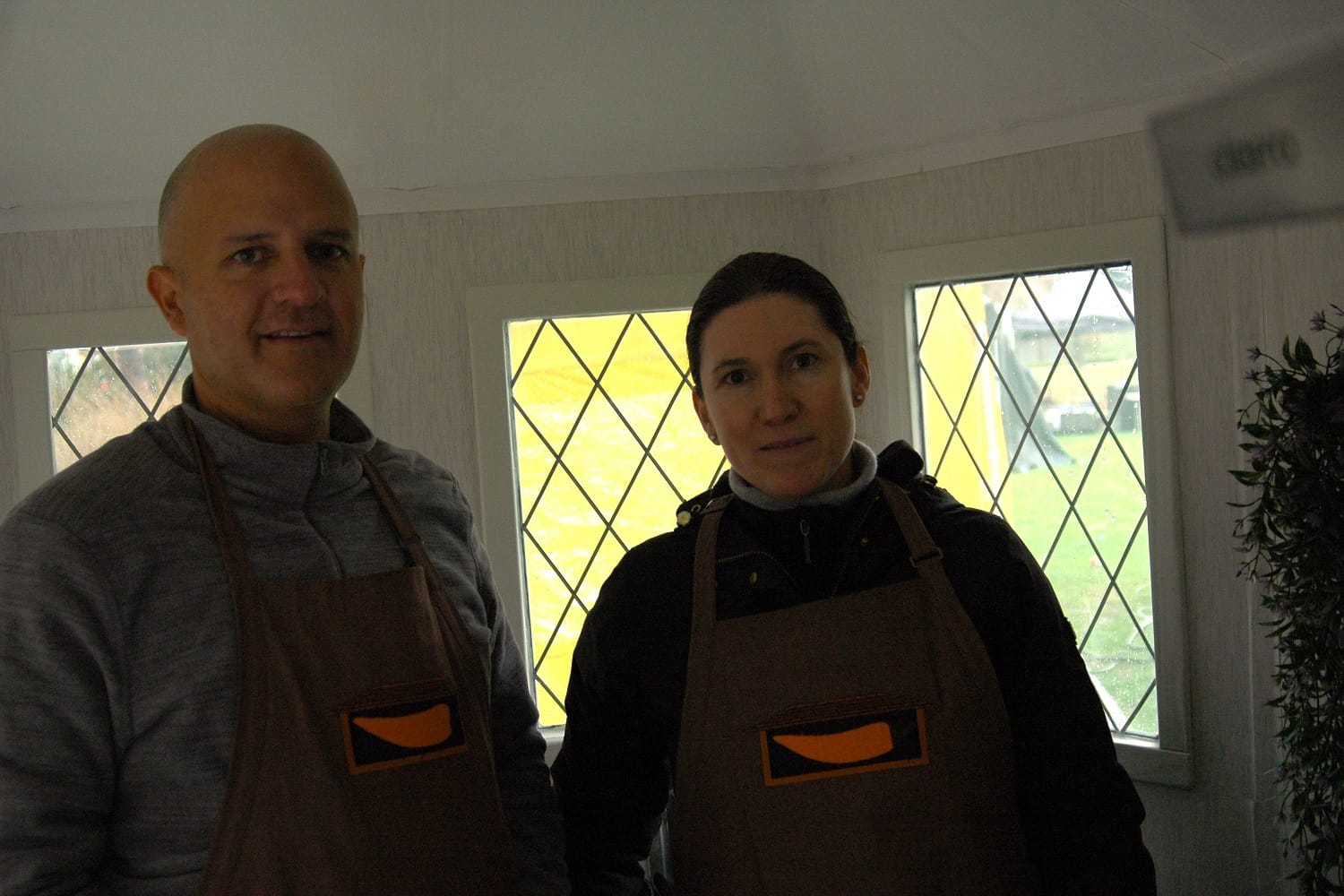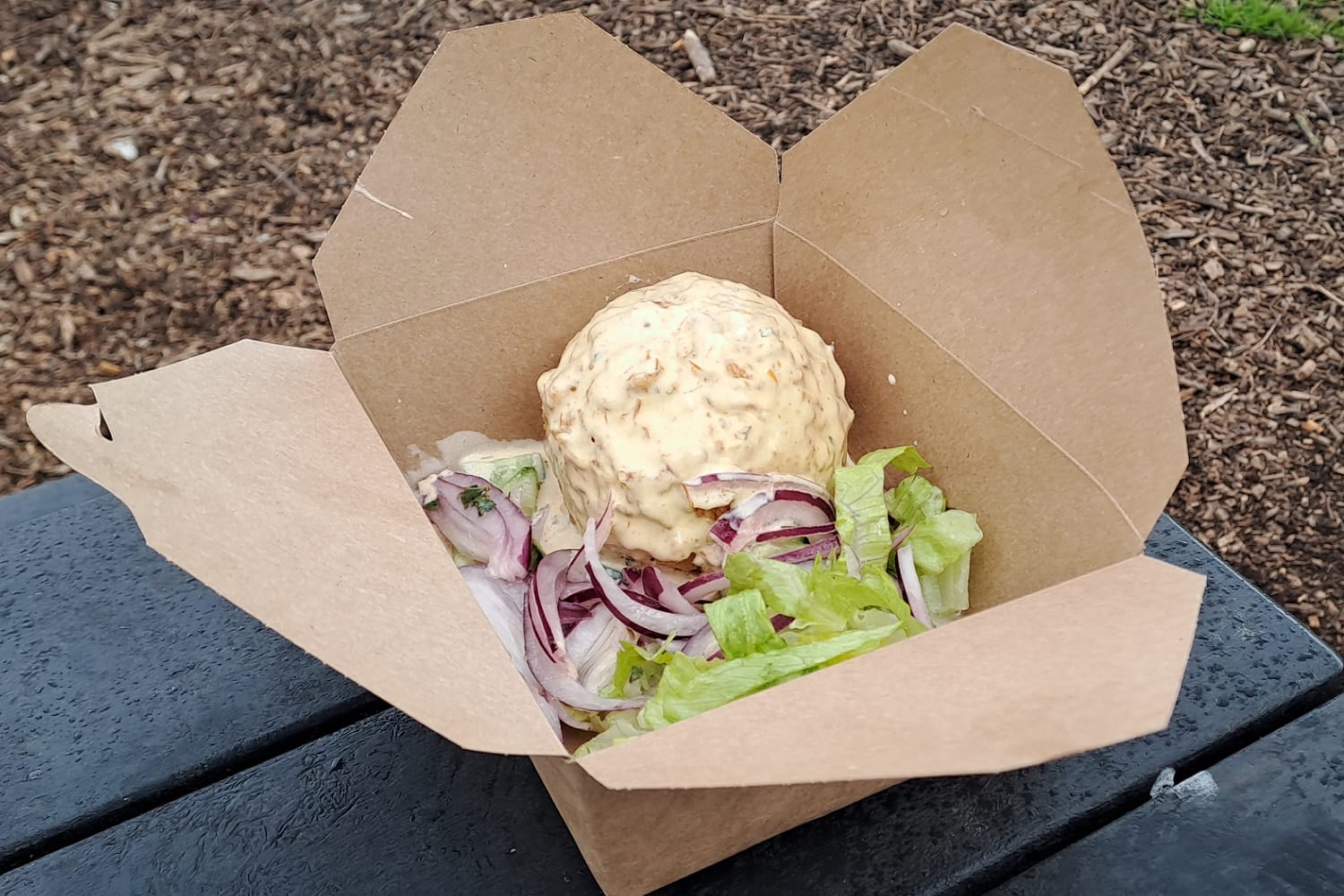What’s the best way to tell area residents about plans for a new asylum shelter nearby?
The government should tell communities directly about plans for new asylum shelters, some activists and politicians say.
The Chilli Pepper food trailer, which can be found at the weekly market on Merrion Square, brings Peruvian food to Dublin.

The crowds stayed away from the weekly food market on Merrion Square last Thursday.
At about 2pm, fat icy raindrops drummed on the roof of the Chilli Pepper food trailer in the north-east corner of the park.
Sheltered inside were chef Michelangelo Dalla Pieta and his partner, Rochi De Las Casas.
“We only had 50 percent of our usual customers,” Dalla Pieta said, while vigorously stirring up a ceviche, mixing sliced cubes and strips of tilapia – a freshwater fish – and a pale-pink creamy marinade.
It is known as leche de tigre, he says, or tiger’s milk. “Not from a real tiger.”
The marinade blended coriander, lime, onion, garlic, ginger and red chilli and the fish had been chosen for its firmness, De Las Casas says. “It absorbs all of this flavour without being destroyed by the lime.”
Ceviche is consumed widely along the coast of Peru, he says. “People will put all kinds of seafood in it. But the main thing is that the fish is marinated in lime.”
Combined with a side of sweet potato and slices of dried banana, the dish is served chilled, he says, smiling as he looks out at a few people hurrying by under umbrellas. “It is not perfect for this weather.”
On the first bite, the tilapia fish dissolves, flooding the mouth with citrus and cumin.
It must be eaten quickly, he says, because the lime cooks the fish. “You don’t have too much time. After maybe ten minutes, the texture changes, and it’s almost like chicken.”
The method of preparation is partially influenced by Japanese cooking, he says. “We have a lot of people from Japan in Peru.”
Peruvian cuisines fuse together many different styles like this, De Las Casas says. “That is what is nice. It’s the variety, though most of the dishes contain the yellow Peruvian chilli pepper, and that’s why we gave this the name.”
Both Dalla Pieta and De Las Casas hail from Lima, the capital of Peru, says De Las Casas.
Dalla Pieta is Italian and Peruvian, De Las Casas says, while her partner quietly doled out ceviche into a take-away box. “He studied cuisine in Peru, and then went to Italy for a while.”
He went back and forth between Venice and Lima, where he took charge of his family’s restaurant, before moving to the United States. There he worked as a chef in Jackson, Wyoming, she says.

Together, the couple moved to Barcelona, staying for 10 years, before landing in Dublin in 2017.
Dalla Pieta took work as a chef, De Las Casas as a doctor. “I don’t cook,” she says.
There weren’t many places in Dublin that served Peruvian food when the couple arrived, says Dalla Pieta, and no market stalls that did, as far as they could find.
Late last year, Dalla Pieta began to draw his imagined future market stall in a book that he has.
“Like, this little house,” says De Las Casas.
By chance, he spotted a trailer for sale in Galway that fit their exact criteria, she says. “It was a catering trailer from the 196os.”
The exterior resembles that of a hexagonal building in the Tudor-style with white walls, a timber frame and diamond grids on each window.
Inside, two wide bronze lamp shades hang from the roof, with a pair of repurposed jar-lids covering the bulbs.
Dalla Pieta sighs as he thinks back to the refurbishment. “I had never done work like that before.”
“It took the summer plus October,” says Da Las Casas. “It was an adventure for us.”
Resting on the inside of the Chilli Pepper market stall’s service counter last Thursday was a stack of six rectangular tamales, wrapped in banana leaves.
The parcels are packed with pork, kalamata olives and crushed peanuts and scattered throughout the moist cornmeal filling.
Inside a glowing glass case are several round potato croquettes, mashed on the inside, crispy on the out, and doused in a sweet chilli mayonnaise. They are stuffed with ground beef, raisins and olives, and seasoned with cumin.
The original name of the croquette is the “papa rellena”, says Dalla Pieta, or stuffed potato.
His recipe deviates from the most common Peruvian style because of its fried crust. “With the original recipe, the outside is softer. Not crispy,” he says.
The croquettes are the size of baseballs.

Even Chilli Pepper’s sides, like the croquettes or the tamales, are made to fulfil the purpose of a full lunch, De Las Casas says. “Michelangelo loves quality, but he also wants to give good portions, so people don’t say, ‘I’m hungry, and I need to go somewhere else too.’”
Matching quantity with quality is essential, he says. “The idea for me, personally, comes from the origin of many Peruvian foods. This is not an expensive food. They were made by poor people.”
De Las Casas nods to the ceviche, which in their recipe uses whitefish. It is more commonly served with flatfish nowadays, he says. “It’s more expensive.”
They prefer the whitefish, because while its flavour is milder, it soaks up the tiger’s milk nicely, she says. “And because it’s more affordable, more people can try this.”
Before the couple clean up and pack away their equipment, Dalla Pieta serves up one last dish, aji de gallina, a creamy chicken stew with rice.
Though flavoured with chilli pepper, the sauce is mild, with the faintest hit of parmesan. It’s smooth, save for the occasional crunch of a crushed pecan nut.
It’s a striking contrast from everything else on their menu, De Las Casas says. They chose it in part to demonstrate the sheer variety within Peruvian cuisine.
“These dishes differ from one another, but what they all use is the yellow Peruvian chilli pepper,” he says.
The dish’s origins are unknown, he says. “Some people have a story about it coming from Spain.” Others say it came from enslaved people transported there, he says.
Peruvian cooking is a highly international cuisine, and their menu demonstrates that, he says. “We have, I think, five different cultures here.”
Dalla Pieta says his national foods draw from Spanish, Italian, Incan cultures.
The ceviche fuses Peruvian ingredients with the Japanese method of preparing sashimi when it is sliced into thin strips, rather than cubes, he says. “We call this type of food Nikkei cuisine.”
The basic idea for the tamale came from Mexico, he says, while raising one to inhale its intense grassy fragrance. “But we have another recipe from the Incas too.”
Says De Las Casas: “There is so much fusion with other cultures in this cooking.”
Get our latest headlines in one of them, and recommendations for things to do in Dublin in the other.